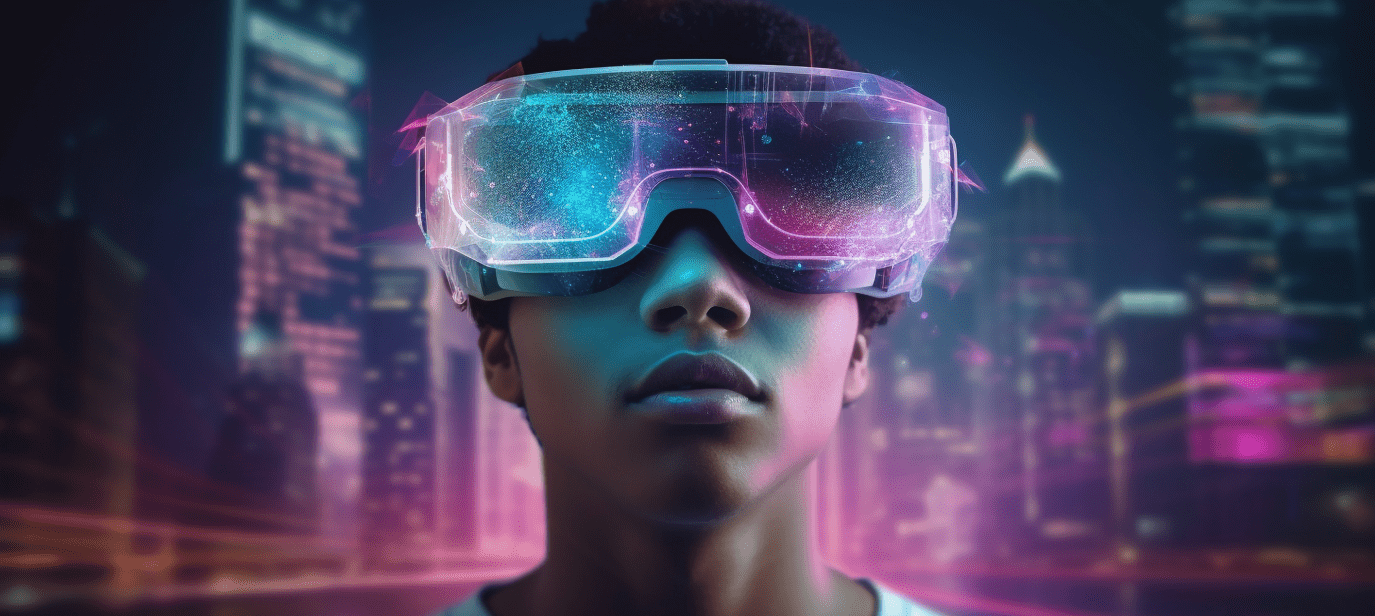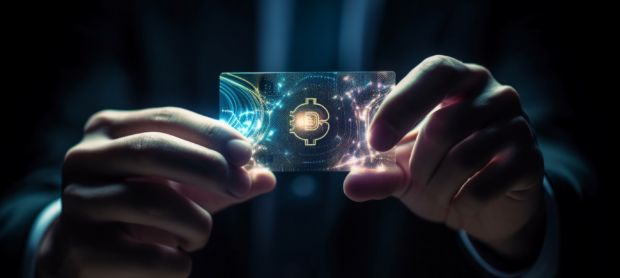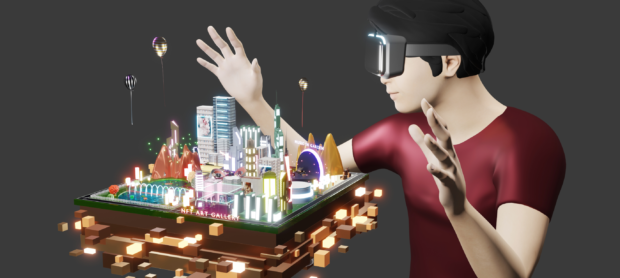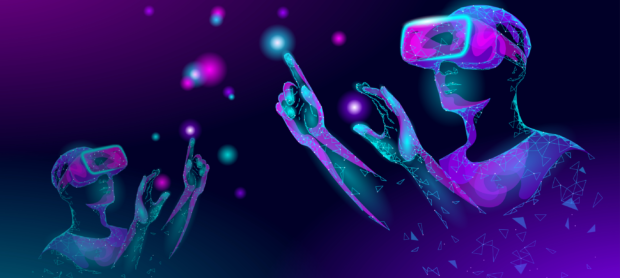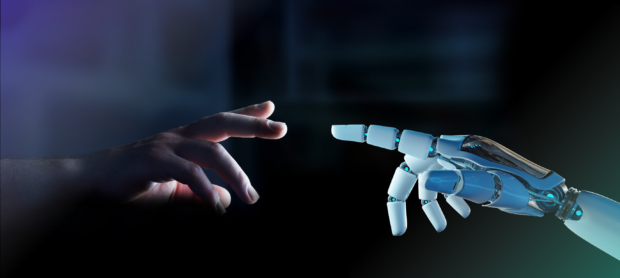We frequently observe concepts that were formerly confined to the world of science fiction become reality in the constantly changing technological landscape. One such concept is mixed reality, a technological advancement that combines the real and virtual worlds to create a singular setting where these two realities may coexist and interact. Positioned between Virtual Reality, which immerses users in totally digital surroundings, and Augmented Reality, which overlays digital information on the actual world, MR delivers the best of both worlds. It makes it possible for us to enjoy fully immersive, contextually aware digital upgrades that meld with the real world.
There is enormous potential for MR to revolutionize numerous businesses and how we live our daily lives. Imagine using MR glasses to highlight the shortest path to your destination as you navigate a busy metropolis, to read real-time restaurant reviews floating next to eateries, or even to sample clothing on a 3D model of yourself. All the while, engaging with both real-world and virtual objects in a way that seems much like dealing with the modern world.
Understanding Mixed Reality in Depth
In its simplest form, mixed reality refers to a hybrid environment in which real-time interaction between physical and digital items is possible. It’s a continuum that includes a variety of experiences, obfuscating the distinction between the real world and a wholly artificial, digital setting. This fusion is made possible by incorporating artificial, digitally manufactured material into the user’s actual environment in a way that allows the artificial content to be seen as an actual component of that environment.
Hardware and software are the two main elements needed to realize MR.
Hardware: To enable the merging of realities in MR, specific equipment is needed. This can include eyewear, glasses, or other wearables having the ability to sense depth and the surrounding environment. These gadgets feature cameras and sensors that can map and comprehend the surroundings, which enables digital material to be placed precisely in the real world.
Software: The software element is in charge of producing and overseeing the user-interactive digital material. To comprehend the surroundings, follow user movement, and depict digital items accurately in the user’s field of view, it uses sophisticated algorithms and makes use of technologies like computer vision, artificial intelligence, and machine learning.
With the introduction of revolutionary methods of engagement, entertainment, and employment, MR has already started to permeate a number of industries.
Gaming: The gambling sector has perhaps adopted MR in the most noticeable way. Digital characters from games like “Pokémon Go” and “Minecraft Earth” are integrated into the real world to provide an engaging and immersive gaming experience.
Education: MR increases the interaction and interest in learning. The “HoloAnatomy” program, for example, enables medical students to learn human anatomy in 3D and interact with organs as if they were genuine.
Professional Development: Organizations like Airbus employ MR for training. They give holographic instructions to lead employees through difficult assembly processes using Microsoft’s HoloLens.
Retail: MR is transforming the shopping experience in the retail industry. Customers may virtually arrange furniture in their homes using IKEA’s “Place” app, for example, to see how it fits and appears before making a purchase.

The Driving Forces behind Mixed Reality
The Mixed Reality revolution is being led by many titans of technology, who are banking on its future and seeing its enormous potential.
Microsoft:
With the HoloLens series, Microsoft is at the forefront of MR. These stand-alone headsets are made for businesses and may help with difficult activities including guided tasks, remote support, and spatial planning.
Apple:
The Vision Pro, the company’s first mixed reality headset, has been made available. High-end technology called the Vision Pro is made for both AR and VR experiences. It is equipped with two 1080p monitors, a powerful processor, and a number of sensors that enable hand and eye tracking as well as spatial awareness.
Facebook (Meta):
Facebook, now Meta, is making significant investments in creating a “Metaverse,” a communal virtual environment that is home to both virtual reality (VR) and augmented reality (MR) activities.
Google:
Google has advanced in MR in a number of ways, most notably with its Google Glass project. It also continues to incorporate MR technology into its mobile ecosystem, such as with AR features in Google Maps.
The spread of MR is not an isolated phenomenon. Its expansion is being accelerated by a number of significant technical developments.
Artificial Intelligence and Machine Learning: AI and ML are essential for the creation of intelligent systems that can comprehend the physical environment and engage in meaningful interactions with it.
Computer Vision: The ability of MR devices to detect and understand the physical environment is made possible by advancements in computer vision technology. This capability is crucial for smoothly integrating digital aspects into the real world.
Edge Computing and 5G: Smooth MR experiences require low-latency, high-speed data processing and transmission, which edge computing and the development of 5G networks can offer.
Hardware Innovations: Enhancing the wearability, durability, and accuracy of MR devices through advancements in display technology, battery life, and sensor accuracy.
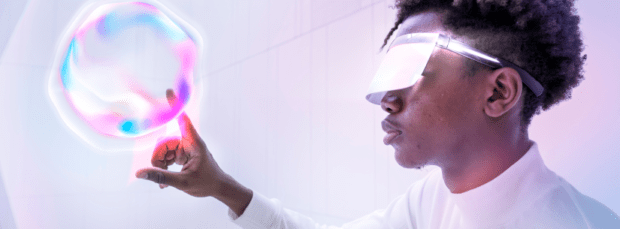
Future Predictions and Trends in Mixed Reality
As we navigate further into the digital age, Mixed Reality (MR) is set to witness extraordinary growth, spurred on by increased investments and advancing technology. We can anticipate an expansion in the scope of MR applications, ranging from consumer entertainment to professional training and education. Mixed Reality services, where MR is leveraged as a tool to enhance various consumer and business services, are expected to see significant uptake.
The market’s trajectory is also predicted to soar. According to Statista, the MR market size could reach over $3.7 billion by 2025, signifying a fertile ground for innovative applications and the proliferation of mixed reality portals – centralized platforms allowing users to access various MR experiences.
Despite the promising outlook, there are still difficulties with MR. Problems include:
Technical limitations: Although progress has been achieved, problems with device size, battery life, and the seamless fusion of virtual and actual items continue. Further technology advancements are necessary to create MR experiences that are genuinely immersive and pervasive.
Privacy Issues: As MR systems gather and analyse enormous quantities of information about users and their surroundings, privacy issues become urgent. User data must be protected using practical means.
Content Creation: A strong ecosystem of compelling, top-notch mixed reality content is required for MR to genuinely enter the mainstream. Developers must take up the challenge and produce memorable user experiences that highlight the possibilities of MR.
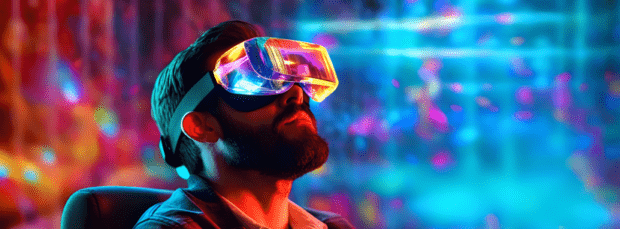
Conclusion
After exploring the world of mixed reality, it is abundantly evident that this innovation, which unites the virtual and real worlds, is poised to change how we interact with gadgets and our environment. The ability to revolutionize a wide range of industries, including gaming, education, professional training, and retail, makes MR a paradigm shift in our technology environment. The integration of MR into our daily lives will be made easier, despite hurdles, because of developments in hardware, software, and AI.
As MR continues to evolve, so do the opportunities to be part of this thrilling revolution. Maybe you have a notion for an MR application that might completely change a market, or maybe you’re just curious about the possibilities. In any case, now is the moment to interact.
At Eventyr, we specialize in bringing such ideas to life. With a highly qualified professional team at your disposal, we can help you navigate the complexities of MR development, and work with you to realize your vision. Don’t just watch the future unfold, be a part of shaping it. Contact us for more information, and together, let’s make the future of Mixed Reality a reality today.
